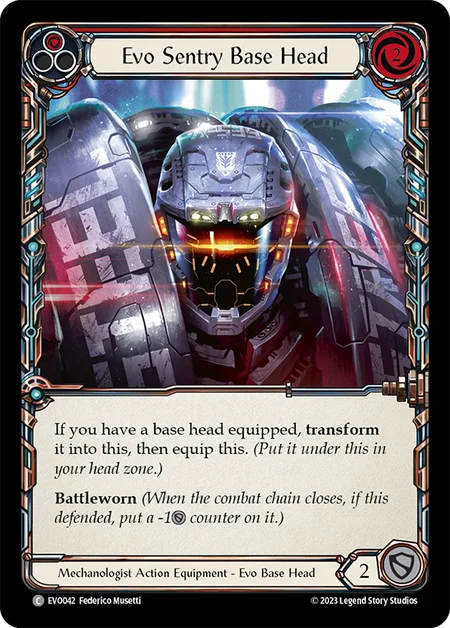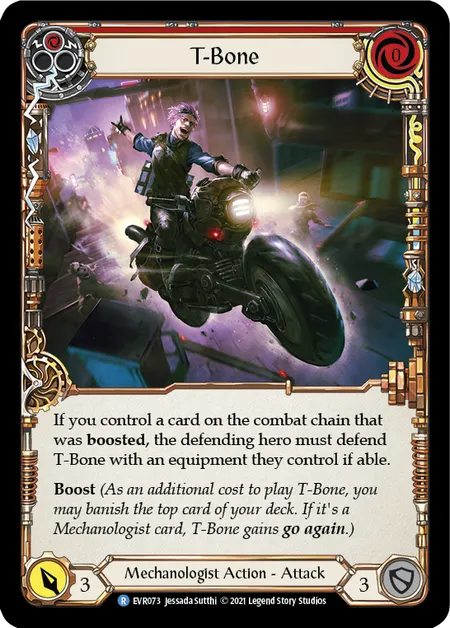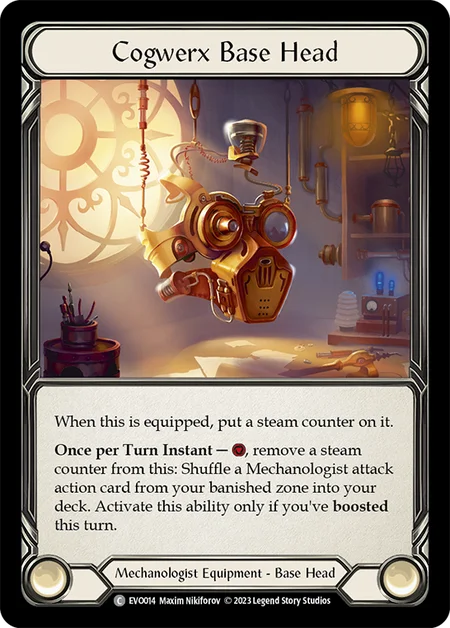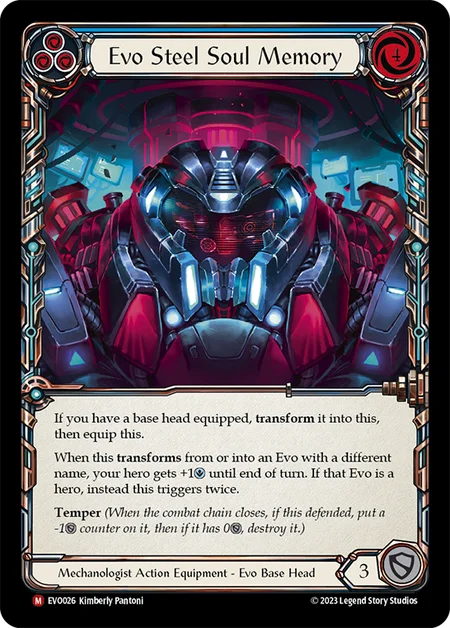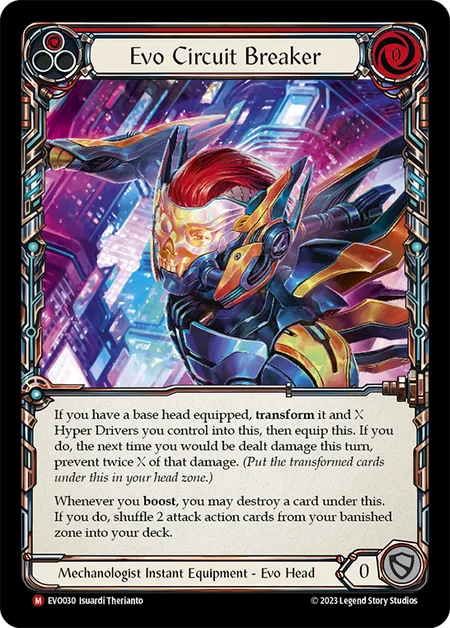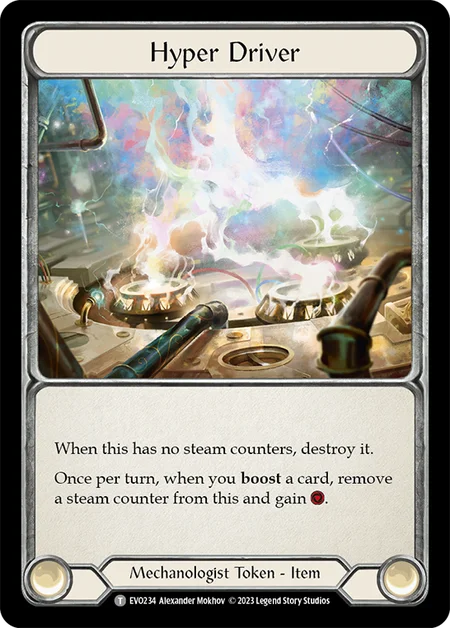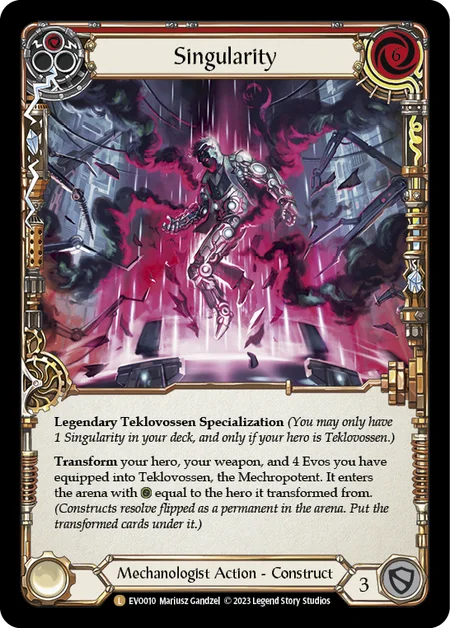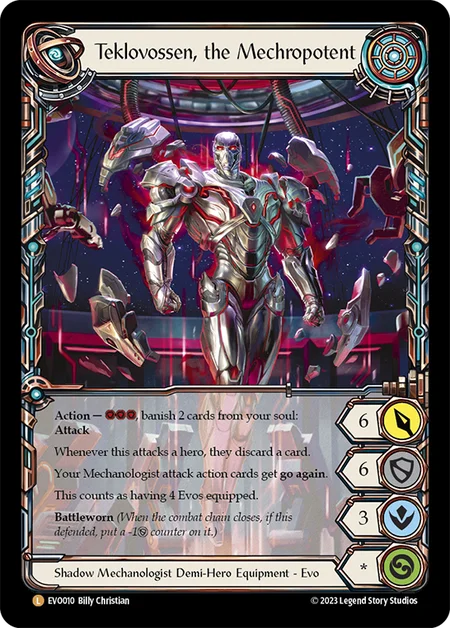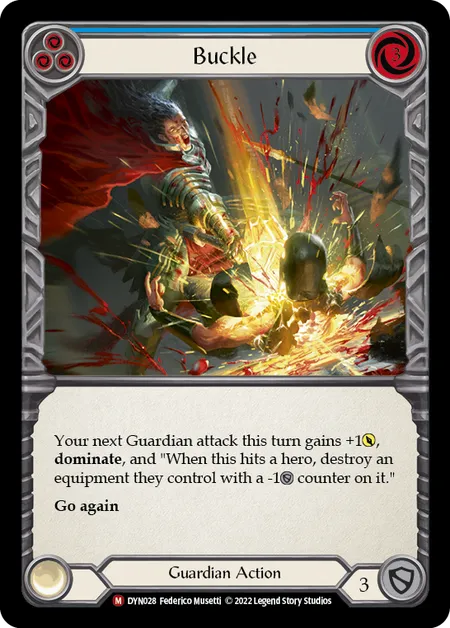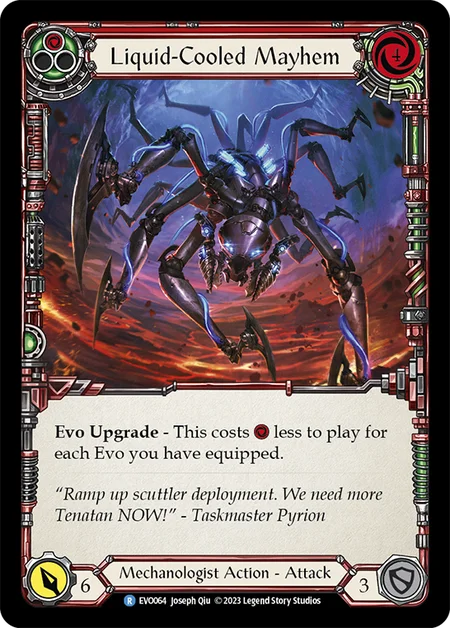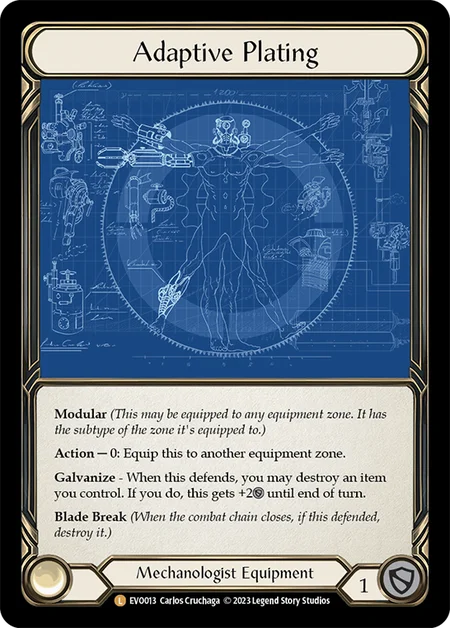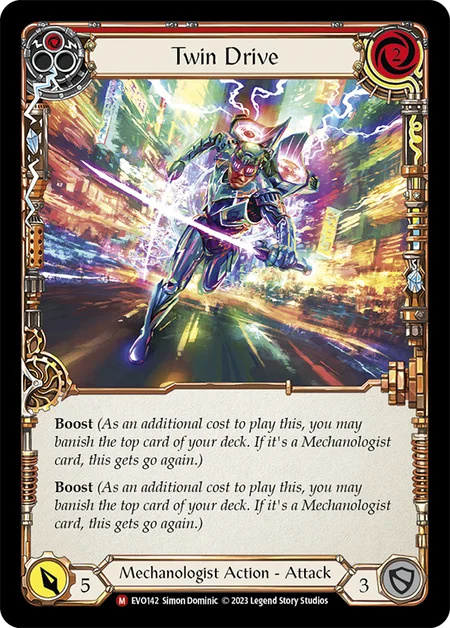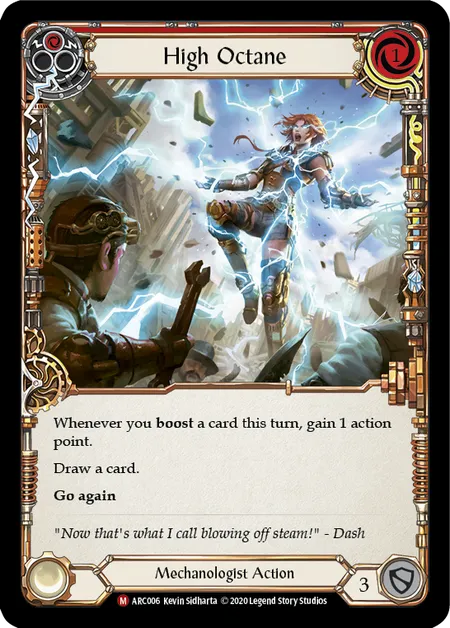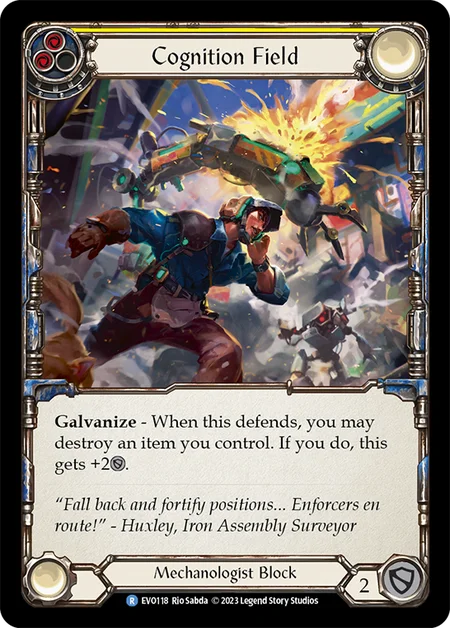Get ready to rev those engines and boost down the streets of Metrix as we dive into the innovative mechanics that make Bright Lights truly shine. Rules and Policy manager Joshua Scott is back to help you harness the power of new types, keywords, and interactions to elevate your gameplay to new heights. Become more than human as you transcend the knowledge barrier and reach enlightenment.
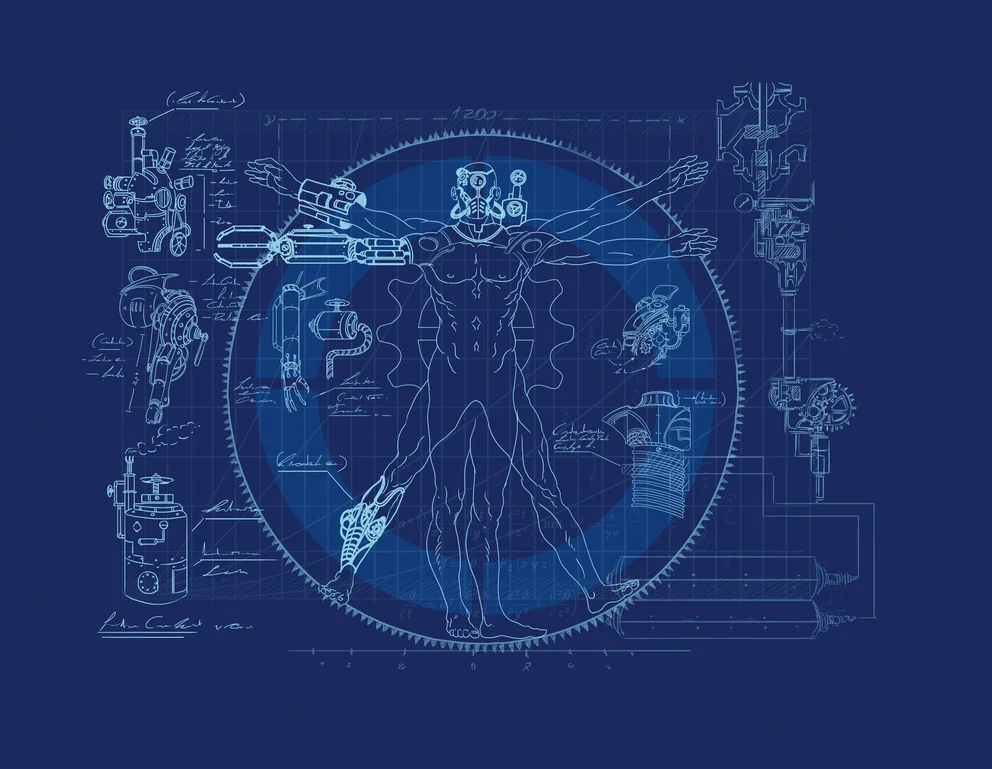
Which cards go into my main deck and which cards do I equip at the start of the game?
Cards with the type “Action Equipment” or “Instant Equipment” are considered deck-cards, and start the game in your main deck. This is because they have the Action or Instant type, which makes them cards that go into your main deck. You can not equip these cards to your equipment zones at the start of the game. In Bright Lights, only Evo cards and Base Evo cards have the Action or Instant types.
Cards with the type Equipment (and not Action or Instant) are considered arena-cards, and can be equipped at the start of the game. They don’t go in your main deck, and it’s important to make sure you remove them before shuffling your cards together to start the game.
Make sure you look carefully at the card type so you know which cards start in your main deck (deck-cards) and what cards you can equip at the start of the game (arena-cards).
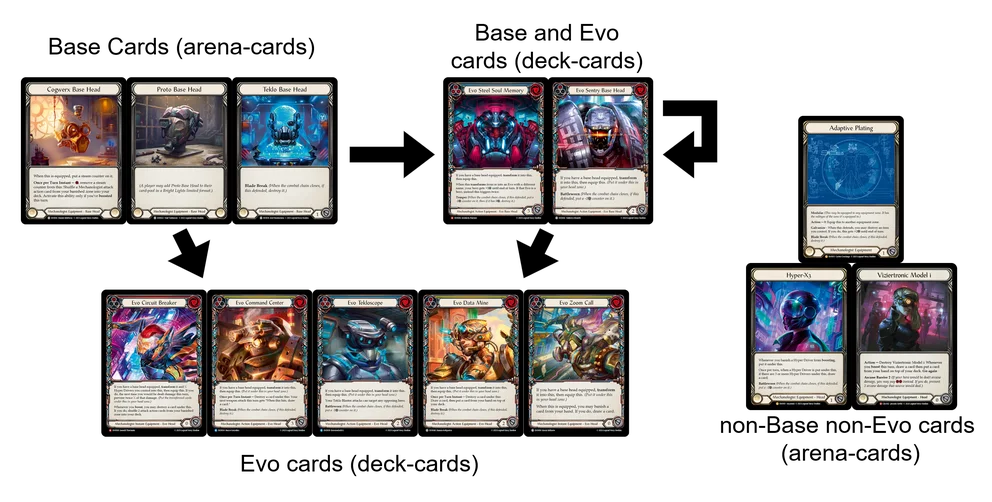
Can I defend with an Evo from hand?
Yes. When a card is in your hand, and it has a defense value, you can defend with it (with the exception of defense reactions which must be played).
Evo cards in Bright Lights have two different types. They’re either Action Equipment, or they’re Instant Equipment. Both can be used to defend. In this way, they can be considered both an Action/Instant card AND an Equipment card. This is very important when you’re defending with them from hand, or even when they’re equipped. For example, abilities like overpower prevent you from defending with more than one action card. If you have an Action Equipment Evo equipped and an Action Equipment Evo in hand, you’ll have to decide between them which one you want to defend with, because you can’t defend with both (they’re both considered action cards).
If you’re required to defend with equipment you control, your Evo cards in hand don’t meet that condition (you don’t control cards until they’re in the arena). This means that you still have to defend cards like a boosted T-Bone with equipment that is already out in the arena.
Things like Temper, Blade Break, and Battleworn don’t trigger when you defend with Evo cards from hand. In most cases, it’s better to think of their text box as being empty when you defend from hand. However, when these are equipped and you defend with them as permanents, their abilities will absolutely trigger.
How do I transform and equip an Evo?
Evo cards all follow a simple pattern to resolve: Put the Base card (and any other required cards) physically underneath the Evo card, then put all of them together in the respective equipment zone.
To get a successful transformation, Evo cards require that you have the corresponding Base card equipped. You can still play Evo cards even if you don’t have the Base equipped - but nothing will happen and the Evo will go to the graveyard.
Cards underneath other cards are called sub-cards. These sub-cards are not considered to be in the arena, which means you don’t control them, and they can’t be targeted by effects. For example, if you have a Hyper Driver as a sub-card under Hyper-X3, the Hyper Driver’s effect doesn’t trigger, and it can not be used by effects that look for a Hyper Driver you control.
When transforming into Evo cards, some Base cards might already have sub-cards. In that case, ALL of those cards go underneath your Evo, turning it into a bigger stack of cards. The same concept applies to cards like Construct Nitro Mechanoid, where all of the cards (and their sub-cards) are transformed and put under the Nitro Mechanoid. This way you can stack up even more cards than you could before.
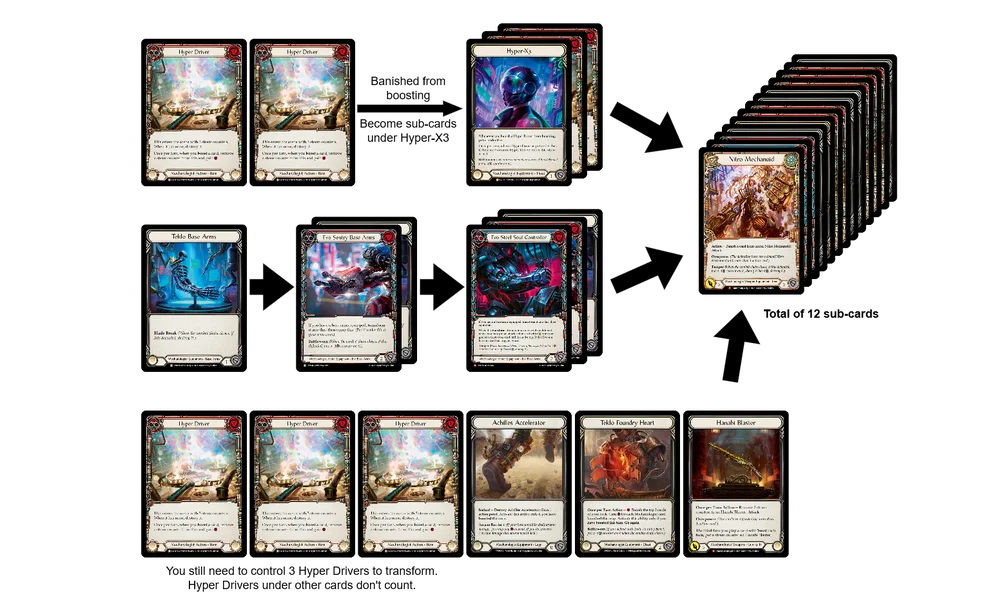
What happens to counters or effects when a Base is transformed?
When a Base (or any card) is transformed and put under another card (becoming a sub-card) it essentially “resets”. It becomes a fresh card, and loses all of its counters and effects that applied to it before it was transformed.
Can I prevent Battleworn/Blade Break/Temper from triggering on my Base by transforming it?
Yes. If you declare your Base equipment as a defending card, you can wait until after damage is calculated (and dealt) and then transform it in the Resolution step or Link step of combat (for example, using Teklovossen's ability). By doing so, the Base equipment is transformed into the Evo equipment and is no longer defending on the combat chain - it 'forgets' that it defended. The Evo it transformed into is equipped to the respective equipment zone and does not automatically become a defending card on the combat chain.
What happens when an Evo is destroyed or banished?
When an Evo is destroyed, banished, or otherwise leaves the arena, any sub-cards underneath it are 'cleared' away. This means that the sub-cards are put into their respective owner’s graveyard. If a sub-card is a token card, it doesn’t get put into the graveyard, it simply ceases to exist and you remove it from the game.
Are tokens under an Evo considered cards?
Yes. A token is just a special type of card. What makes it special is that it has the token type (not to be confused with token rarity). When a token card would be put into a zone outside the arena, like the graveyard or banished zone, it simply ceases to exist and you remove it from the game.
How does Singularity // Teklovossen, the Mechropotent work?
With the latest demi-hero debut, players now have the ability to transform their hero into the formidable Teklovossen, the Mechropotent. By playing Singularity, players transform their hero, weapon and 4 of their equipped Evos into this new demi-hero. Doing so means flipping Singularity to its back-face and putting all 6+ cards underneath, which then become your hero’s soul. Any effects that were previously applied to your hero (e.g. Dishonor) do not apply to the Mechropotent as it is a brand new hero entering the arena. If players don’t have the requisite cards to complete the transform effect, Singularity is just simply placed into its owner’s graveyard.
Players will first notice that this demi-hero has the Shadow talent, however, because you can’t start the game with Teklovossen, the Mechropotent as your hero, you can’t have Shadow cards in your card-pool for constructed formats like Classic Constructed or Blitz. Also be warned, that transforming into Mechropotent comes with a grave danger. As your hero is now also an Equipment type card, it is subject to all sorts of effects that target it. If your hero is destroyed or banished as the result of an effect… that’s it, you have no hero, and therefore you’ve lost the game.
The Mechropotent is the first hero to have attack and defense properties, in addition to its intellect and life, printed on its face. The power allows it to be used with an attack ability, and its defense allows it to defend against an attack. Its base life is equal to your hero’s current life total when Singularity resolves.
The Mechropotent has an activated ability that allows it to attack at the cost of resources and banishing cards from soul. Because it doesn’t have an activation limit, players can attack with Mechropotent multiple times during a turn/combat chain provided they have the necessary resources, action points and cards in soul. Every time you attack this way, the opponent must discard a card of their choice from their hand, before they even get to block. Complementing all this is the ability to give go again to your Mechanologist attack action cards, making the Mechropotent a threat unlike anything we've ever seen before in the world of Rathe.
Defending with the Mechropotent is also now an option. Because he has the Equipment type, he can be declared as a defending card against your opponent’s attacks. But be aware, should you choose to do so, the Mechropotent will remain defending on the chain link and is unable to defend subsequent attacks until the combat chain is closed. When the combat chain is closed, he will receive a -1 defense counter from Battleworn. You do not lose the game if the defense value reaches 0, you just won't get any defensive value out of blocking with him anymore.
Lastly, the Mechropotent has an ability that reads “This counts as having 4 Evos equipped”, which matters for the purposes of effects like the new Evo Upgrade abilities. For example, if you were to play Liquid-Cooled Mayhem, it would cost 4 less resources to play! Although the Mechropotent has the Equipment type and Evo subtype, it is important to note that the card itself doesn't count as being equipped for the purposes of effects that are conditional on Evos being equipped. Instead, the Mechropotent's hero ability allows you to treat it as if you have 4 Evos equipped. What this means is when an effect counts how many Evos you have equipped, the ability adds 4 to that number.
What’s the deal with Adaptive Plating?
Adaptive Plating is a card that brings a brand new ability into the game:
Modular (This may be equipped to any equipment zone. It has the subtype of the zone it's equipped to.)
Modular essentially allows you to treat an equipment as though it were any of the equipment subtypes: Head, Chest, Arms, or Legs. At the start of the game, you can equip modular equipment to any of these four zones. You can’t equip it to a weapon zone as though it were an off-hand or a quiver, because it can only be put in the four main equipment zones. This does mean that you can start the game with up to three Adaptive Plating equipped in different zones, although it probably won't benefit you to do so.
When it is equipped to a zone, its other abilities become functional. In particular, its activated ability allows you to equip it to another equipment zone. To equip it to another zone, that zone must be empty (and not have anything else equipped to it). When it is successfully equipped to another zone, it is considered to have the respective subtype of that new zone again.
While the uses for Adaptive Plating are limited, the possible future interactions are endless. In particular, after players have made their choices of weapons and equipment, the rules will accommodate players taking turns to equip them during the start-of-game procedure. This gives the second player the ability to choose where to equip their modular equipment based on what they see the first player using.
How do I use Twin Drive?
Twin Drive is a card with two separate boost abilities on it.
When you play Twin Drive, before you pay any costs, you must first declare how many times you want to boost the card: 0, 1, or 2 times. Then, after you’ve paid the resource cost, you may banish the top card(s) of your deck to pay the boost cost.
If you’re playing Dash I/O or Dash, Database, you cannot boost once, then look at the top card of your deck, and then decide if you want to boost again. You must commit to boosting 0, 1, or 2 times before you pay any costs.
If you boost twice and banish two Mechanologist cards, you do not gain 2 action points when the chain link resolves. You can only gain 1 action point from go again, no matter how many times you give a card go again.
Boosting twice does have its upsides though. It will trigger effects that trigger when you boost twice, it allows you to still get go again if one of the cards banished is a Mechanologist card, and it counts as two boosts for effects that care about how many times you’ve boosted this combat chain/turn.
How do Block cards work?
Block cards are a new type of card in Flesh and Blood. Much like the resource type, they don’t have a cost and cannot be played. Block cards in Bright Lights have a defense value and a pitch value, meaning you’ve got the option to defend an attack with them (often with the benefit of triggering their ability), or pitching them for resources.
It’s important not to confuse block cards with defense reactions. Block cards act just like any other card in your hand when it comes to defending an attack. During the defend step of combat, you can declare it along with other cards in your hand and equipment you control to defend against an attack. Defense reactions on the other hand, are cards that you play during the reaction step of combat, and then they resolve and become defending cards on the chain link.
WARNING: none of the block cards in Bright Lights have the ambush keyword, which means you are unable to defend with them from your arsenal, so if you place a block card there it might get stuck for the rest of the game.
